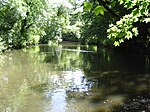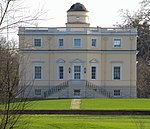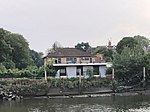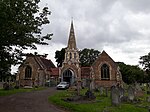Isleworth Ait
Geography of the London Borough of HounslowIslands of LondonIslands of the River ThamesLocal nature reserves in Greater LondonLondon Wildlife Trust ... and 2 more
Nature reserves in the London Borough of HounslowUse British English from November 2017

Isleworth Ait, also known as Isleworth Eyot, is a between 3.5-hectare (8.6-acre) and 9.370-acre (3.792 ha) teardrop-shaped island in the River Thames in England. The long ait is on the Tideway facing Old Isleworth and the towpath alongside the Royal Mid-Surrey Golf Club. These places are in the London Boroughs of Hounslow and Richmond upon Thames. The island faces Heron's Place and a number of commercial buildings.
Excerpt from the Wikipedia article Isleworth Ait (License: CC BY-SA 3.0, Authors, Images).Isleworth Ait
Bridge Wharf Road, London Isleworth (London Borough of Hounslow)
Geographical coordinates (GPS) Address External links Nearby Places Show on map
Geographical coordinates (GPS)
| Latitude | Longitude |
|---|---|
| N 51.469 ° | E -0.3207 ° |
Address
Isleworth Ait
Bridge Wharf Road
TW7 6BS London, Isleworth (London Borough of Hounslow)
England, United Kingdom
Open on Google Maps










